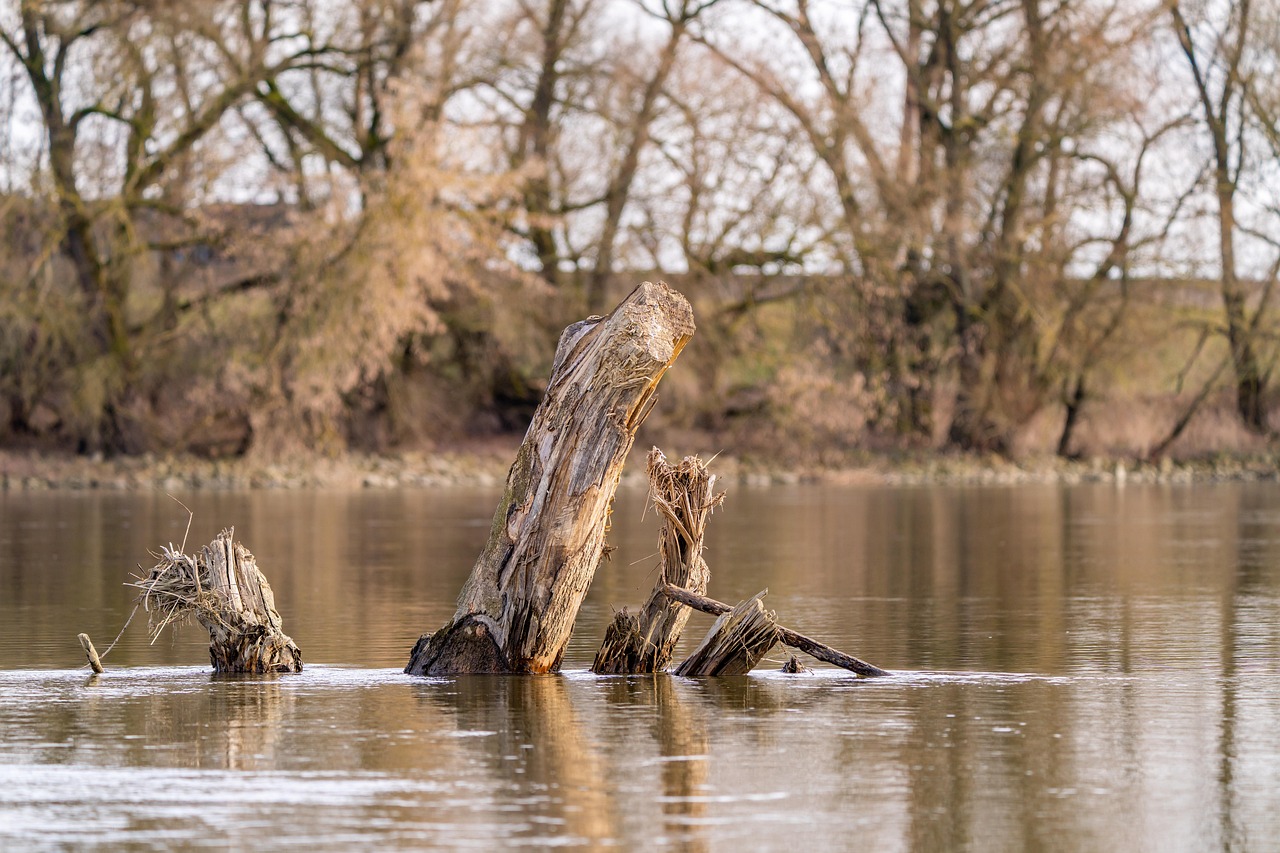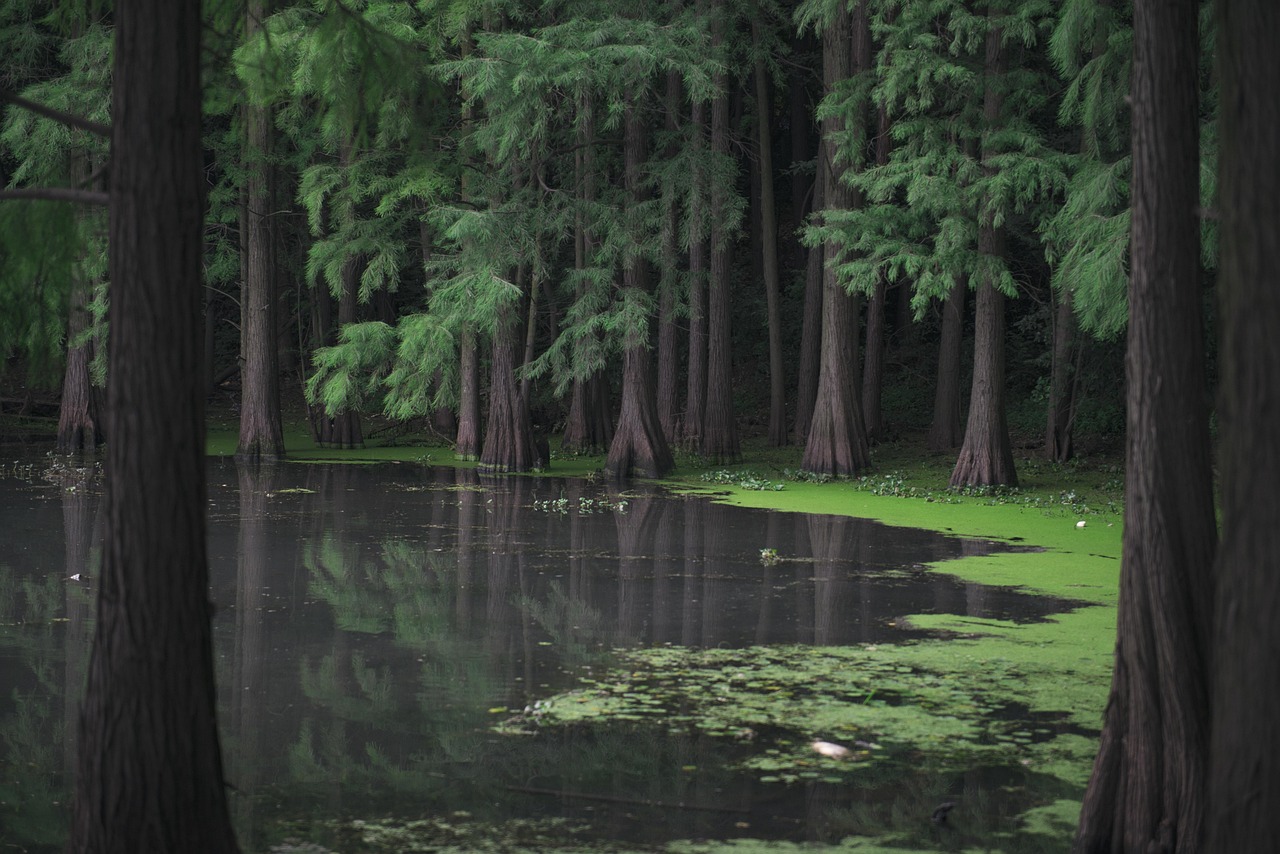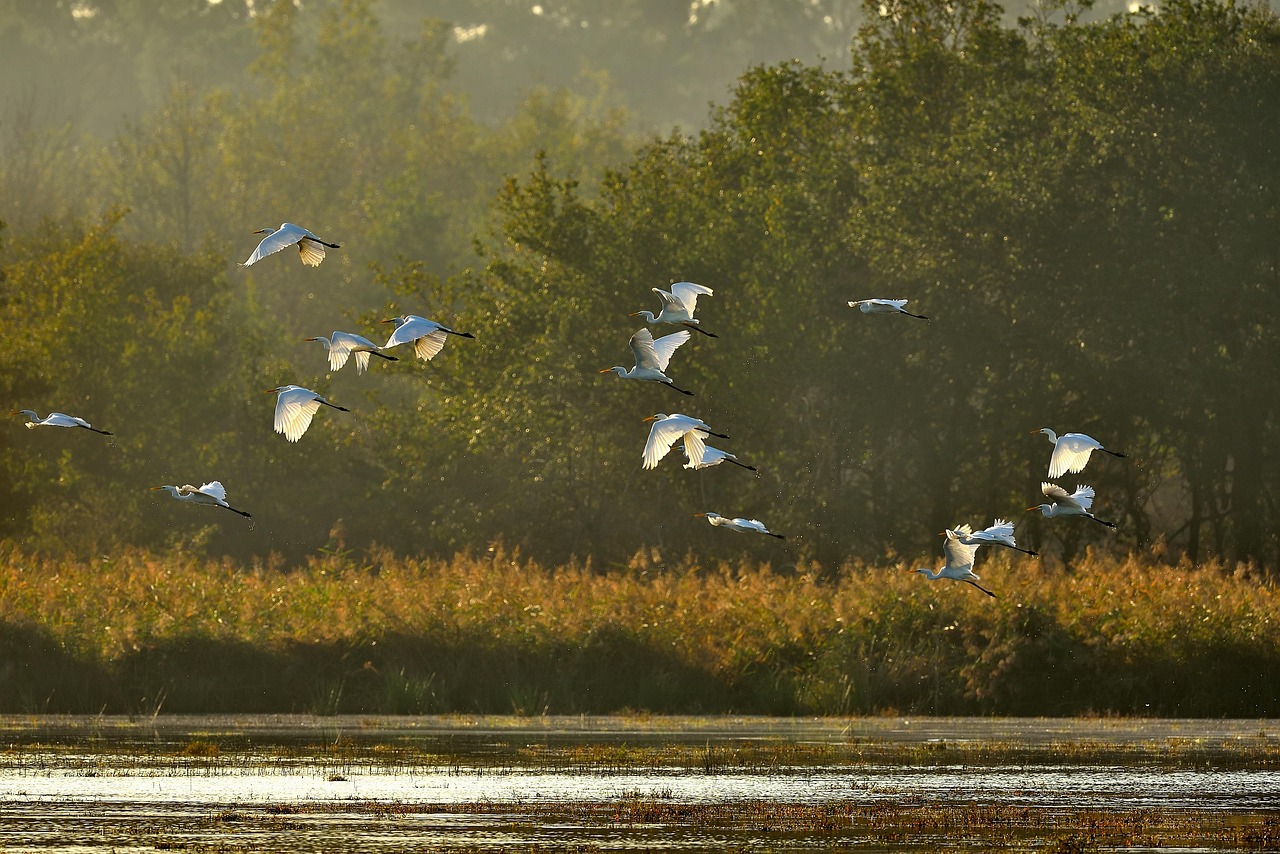Specialized pruning for wetland trees involves techniques tailored to their unique growth patterns and environmental conditions. This method enhances tree health, promotes biodiversity, and supports wetland ecosystems by managing species composition and encouraging resilience against climate change.
Wetland ecosystems are vital to our environment. They serve numerous functions, from water filtration to providing habitat for diverse wildlife. Pruning wetland trees is essential not only for their health but also for the overall health of the ecosystem. Wetland trees, including willows, alders, and cypress, have adapted to thrive in saturated soils. However, their growth patterns differ significantly from those of trees in drier environments. Understanding these differences is crucial for effective pruning.

Specialized pruning techniques can benefit wetland trees in various ways. Proper pruning can help in achieving the following:
- Improved air circulation among branches
- Enhanced light penetration for lower foliage
- Reduction of disease and pest infestations
- Encouragement of healthy growth patterns
- Maintenance of desired shapes and sizes
When discussing specialized pruning for wetland trees, it is essential to consider the timing and methods used. Wetlands often experience seasonal changes that influence tree growth. For instance, during the growing season, trees may be more susceptible to stress from pruning. Therefore, understanding the ideal timeframes for pruning is critical.
Understanding Wetland Tree Species
Before diving into pruning techniques, it is essential to understand the various tree species commonly found in wetlands. Each species has unique characteristics that affect how they should be pruned. Below is a table highlighting some common wetland tree species and their notable features:

| Tree Species | Common Characteristics | Pruning Considerations |
|---|---|---|
| Willow (Salix spp.) | Fast-growing; prefers moist soil; flexible branches | Prune in late winter; remove dead or damaged branches |
| Alder (Alnus spp.) | Nitrogen-fixing; thrives in saturated conditions | Prune for shape; best done after flowering |
| Cypress (Taxodium spp.) | Knees develop in saturated soil; slow-growing | Minimal pruning; remove only diseased limbs |
| Red Maple (Acer rubrum) | Seasonal color change; prefers wet soils | Prune in late winter; shape while preserving natural form |
Each species responds differently to pruning. Understanding these differences helps land managers and arborists implement appropriate techniques. Additionally, localized conditions such as soil type, water levels, and climate variations further influence the growth and care of wetland trees.
Another important aspect of specialized pruning is recognizing the goals behind it. Pruning can be employed for various purposes, including:
- Aesthetic Appeal: Enhancing the beauty of wetland areas.
- Ecosystem Health: Encouraging biodiversity by promoting a balanced tree canopy.
- Wildlife Habitat: Creating suitable nesting sites and food sources for animals.
- Safety: Reducing hazards from falling branches or obstructive growth.
Additionally, specialized pruning can help manage invasive species that threaten native wetland trees. Invasive plants often outcompete native species for resources, leading to a decline in biodiversity. Targeted pruning can help control these invasives by removing them before they become problematic.

The technique used for pruning should also be adapted to the specific needs of wetland trees. Common methods include:
- Crown Thinning: Selectively removing branches to reduce density while maintaining overall structure.
- Crown Raising: Removing lower branches to provide clearance for wildlife or human activities.
- Crown Reduction: Reducing the height or spread of a tree while maintaining its natural shape.
Each method requires careful consideration of the tree’s health and the surrounding ecosystem. Proper tools and techniques are vital to ensure that pruning does not harm the tree or disrupt its role within the wetland environment.
In conclusion, specialized pruning for wetland trees requires an understanding of their unique characteristics and environmental needs. By employing appropriate techniques and considering the broader ecological impacts, we can enhance both the health of individual trees and the vitality of entire wetland ecosystems.

Tools and Techniques for Pruning Wetland Trees
The success of specialized pruning for wetland trees largely depends on the right tools and techniques. Using appropriate tools ensures that the pruning process is efficient and minimizes damage to the trees. Here are some essential tools commonly used in wetland tree pruning:
- Hand Pruners: Ideal for small branches, hand pruners allow for precise cuts and are easy to handle.
- Loppers: Suitable for thicker branches, loppers provide the leverage needed to cut through larger limbs.
- Saws: A small pruning saw or a pole saw is necessary for branches that are too thick for loppers.
- Safety Gear: Gloves, goggles, and hard hats protect the pruner from injuries while working in potentially hazardous conditions.
Using the right tool for the job not only speeds up the process but also promotes better healing for the tree. Clean and sharp tools help prevent disease transmission, which is particularly important in wetland environments where moisture can encourage fungal infections.
Pruning Techniques
In addition to having the right tools, knowing how to use them effectively is crucial. The following techniques are beneficial when pruning wetland trees:
- Make Clean Cuts: Always aim for clean cuts at a 45-degree angle. This shape helps water run off the cut surface, reducing the risk of rot.
- Avoid Topping: Topping trees can lead to weak growth and increased susceptibility to disease. Always prune back to a branch or bud to maintain tree health.
- Follow the 1/3 Rule: Never remove more than one-third of a tree’s canopy in a single season to avoid stressing the tree.
- Remove Dead or Diseased Wood: Focus on removing any dead, damaged, or diseased branches first. This promotes healthy growth and reduces disease spread.
Understanding when to apply these techniques can also enhance their effectiveness. For instance, late winter or early spring is often ideal for pruning many species as they are still dormant. This timing minimizes stress on the tree and allows for quicker recovery once spring growth begins.
Environmental Considerations in Pruning
Pruning wetland trees is not just about aesthetics or tree health; it also involves understanding the surrounding environment. Wetlands are sensitive ecosystems, and any intervention can have far-reaching consequences. Here are some environmental factors to consider:
- Soil Conditions: Wetland soils are typically saturated with water during certain seasons. This impacts root stability and nutrient availability, which should be considered when planning pruning activities.
- Wildlife Habitat: Trees provide essential habitats for various species. Pruning should aim to preserve or enhance these habitats instead of disrupting them.
- Water Flow Patterns: Changes in tree structure can affect water flow within the wetland. It is essential to maintain the natural hydrology of the area during pruning.
By considering these environmental factors, land managers can ensure that pruning practices contribute positively to the wetland ecosystem rather than detract from it. Coordination with ecological experts can further enhance the effectiveness of pruning activities.
Timing Your Pruning
Timing is critical when it comes to pruning wetland trees. Each tree species has an optimal time for pruning based on its growth cycle. Here are some general guidelines:
| Tree Species | Best Time for Pruning | Notes |
|---|---|---|
| Willow | Late winter to early spring | Prune before new growth starts for best results. |
| Alder | Post-flowering (late summer) | Avoid heavy pruning during nesting seasons. |
| Cypress | Late winter | Minimal pruning; focus on removing dead material. |
| Red Maple | Late winter to early spring | Prune after flowering to maintain shape without affecting blooms. |
Following these guidelines helps ensure that trees remain healthy and grow vigorously after pruning. Additionally, being aware of local wildlife nesting seasons is crucial to avoid disturbing habitats during sensitive times.
Sustaining Tree Health Post-Pruning
After completing the pruning process, it is vital to monitor the trees’ health and address any emerging issues promptly. Here are some key practices to follow:
- Regular Inspections: Check trees periodically for signs of disease or pest infestations following pruning.
- Mulching: Apply organic mulch around the base of trees to retain moisture and suppress weeds, promoting healthier growth.
- Fertilization: Consider applying slow-release fertilizers if soil nutrients are low, helping trees recover from the stress of pruning.
Sustaining tree health in wetlands requires ongoing attention. By implementing these practices, land managers can ensure that wetland trees thrive and continue supporting their ecosystems effectively.
Challenges in Pruning Wetland Trees
While specialized pruning for wetland trees offers numerous benefits, it also presents unique challenges. Understanding these challenges can help land managers and arborists develop effective strategies for maintaining healthy wetland ecosystems. Here are some common hurdles encountered when pruning wetland trees:
- Wet Soil Conditions: The saturated soil in wetlands can complicate access to trees. Heavy machinery may not be suitable, and manual labor can be physically demanding.
- Limited Visibility: Dense underbrush and the natural growth habit of wetland trees can obstruct visibility, making it difficult to assess which branches need pruning.
- Wildlife Concerns: Many wetland areas are home to sensitive wildlife species. Pruning during nesting seasons can disturb habitats, leading to potential negative impacts on bird populations and other wildlife.
- Weather Conditions: Wetlands often experience extreme weather, including heavy rain or flooding. These conditions can limit the time available for safe pruning operations.
Addressing these challenges requires careful planning and adaptation of techniques to ensure that both the trees and their surrounding environment are protected. Collaboration with ecologists and environmental specialists can enhance decision-making processes and lead to better outcomes.
Best Practices for Overcoming Challenges
To effectively navigate the challenges of pruning wetland trees, implement the following best practices:
- Plan Operations Carefully: Schedule pruning activities during dry seasons when soil conditions are more favorable for access. This timing minimizes damage to the ground and surrounding vegetation.
- Utilize Manual Techniques: Whenever possible, use hand tools rather than heavy machinery to minimize soil disturbance. Manual techniques allow for more precise cuts and reduce the risk of damaging nearby plants.
- Conduct Pre-Pruning Assessments: Before starting pruning, conduct thorough inspections to identify nesting sites and other wildlife concerns. This information will help in determining the best timing and approaches for pruning activities.
- Engage Local Experts: Work with local ecologists or wildlife experts to understand the specific needs of the ecosystem. Their insights can guide pruning techniques that support overall biodiversity.
The Role of Biodiversity in Wetland Pruning
Biodiversity plays a crucial role in maintaining healthy wetland ecosystems. Wetland trees contribute to this biodiversity by providing habitats, food sources, and shelter for various species. When pruning wetland trees, it is essential to consider how these actions impact the overall biodiversity of the area.
Some key reasons why biodiversity is important in pruning wetland trees include:
- Habitat Preservation: Wetland trees are home to numerous bird, insect, and mammal species. Pruning should aim to maintain or enhance these habitats rather than disrupt them.
- Nutrient Cycling: Diverse plant life supports nutrient cycling in wetlands. Trees play a vital role in this process by contributing organic material through leaf litter and decaying wood.
- Resilience to Climate Change: Ecosystems with high biodiversity are generally more resilient to environmental stressors such as climate change. Pruning practices should support this resilience by preserving genetic diversity among tree populations.
Enhancing Biodiversity Through Pruning
Pruning can be strategically used to enhance biodiversity in wetland areas. Here are several approaches that can be implemented:
- Diverse Planting: Encourage a mix of native tree species during replanting after pruning. This diversity fosters resilience and attracts a variety of wildlife.
- Encourage Natural Regeneration: Allow natural regeneration processes to occur by leaving some areas unpruned. This approach lets native species thrive and expand.
- Create Wildlife Corridors: Design pruning strategies that maintain continuous tree cover across the landscape. This connectivity supports wildlife movement and feeding patterns.
Monitoring and Evaluating Pruning Outcomes
To ensure the effectiveness of pruning practices, it is essential to monitor and evaluate outcomes regularly. Proper assessment helps identify what works well and what may need adjustment over time. Here are key steps for effective monitoring:
- Set Clear Objectives: Before beginning any pruning project, establish clear goals related to tree health, biodiversity, and ecosystem functions.
- Document Changes: Keep records of pruning activities, including dates, methods used, and areas affected. Observations should also include any notable changes in tree health or wildlife activity.
- Conduct Follow-Up Inspections: Schedule follow-up inspections at regular intervals post-pruning. Look for signs of recovery or stress in trees and monitor wildlife interactions with the area.
This ongoing evaluation process allows for adaptive management strategies that enhance both tree health and overall ecosystem vitality. Engaging community members or volunteers in monitoring efforts can also foster a sense of stewardship toward wetland environments.
By understanding the challenges associated with pruning wetland trees, recognizing the importance of biodiversity, and implementing effective monitoring practices, land managers can contribute to sustaining healthy wetland ecosystems for future generations.
Future Directions in Wetland Tree Pruning
The practice of specialized pruning for wetland trees is continually evolving. As our understanding of wetland ecosystems deepens, new techniques and strategies are being developed. Here are some key areas where future advancements may take place:
- Research and Innovation: Ongoing research into the biology and ecology of wetland trees will yield new insights that can improve pruning practices. This includes studies on tree responses to different pruning techniques and their effects on surrounding wildlife.
- Technological Integration: The integration of technology, such as drones for aerial surveying and monitoring, can enhance the ability to assess tree health and plan effective pruning strategies.
- Community Engagement: Increasing community involvement in conservation efforts can lead to more sustainable practices. Educational programs can empower local residents to become stewards of their wetland environments, promoting awareness around the importance of proper tree care.
- Climate Adaptation Strategies: As climate change continues to impact wetlands, adaptive management practices will be essential. This includes adjusting pruning schedules and techniques to support tree resilience against changing weather patterns and ecological conditions.
Emphasizing these areas can help ensure that wetland pruning practices not only maintain tree health but also support the broader ecosystem. Collaboration among land managers, researchers, and local communities will be crucial in driving these advancements forward.
Final Thoughts
Specialized pruning for wetland trees is a vital practice that supports the health and sustainability of wetland ecosystems. By focusing on the unique needs of these trees, land managers can enhance biodiversity and promote resilience within these critical habitats. Effective pruning techniques, when combined with ongoing monitoring and community engagement, create a holistic approach to wetland management.
Throughout this article, we have explored various aspects of specialized pruning, including the tools and techniques required, the challenges faced, and the importance of biodiversity. The integration of best practices and innovative strategies will play a significant role in ensuring that wetland trees thrive in their environments.
As we look toward the future, it is essential to remain adaptable and informed about emerging trends in wetland conservation. By doing so, we can contribute to the preservation of these invaluable ecosystems for generations to come. Through careful stewardship and informed management practices, we can ensure that wetland trees continue to flourish and support the diverse life forms that depend on them.
In conclusion, specialized pruning for wetland trees is not just about maintaining individual plants but is a crucial element in sustaining entire ecosystems. It requires a blend of knowledge, skills, and respect for nature. By implementing thoughtful pruning practices, we can make a lasting impact on the health of our wetlands and the biodiversity they support.
